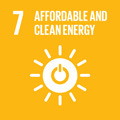- Docente: Paolo Finelli
- Credits: 6
- SSD: FIS/01
- Language: English
- Moduli: Paolo Finelli (Modulo 1) Roberto Spighi (Modulo 2)
- Teaching Mode: In-person learning (entirely or partially) (Modulo 1); In-person learning (entirely or partially) (Modulo 2)
- Campus: Bologna
- Corso: Second cycle degree programme (LM) in Physics (cod. 9245)
Learning outcomes
At the end of the course the student will have knowledge of the principal and most recent applications of Nuclear Physics principles and techniques applied to industrial processes as well as of the important and up-to-date applications to medicine, with emphasis to the experimental techniques used in fundamental physics research. Through realistic examples the student will acquire the capability to evaluate the particles type, energy and flux to be used in real cases.
Course contents
First part
The first part of the course is focused on the applications of nuclear physics for energy production.
The students will learn the physics behind nuclear energy (fission and fusion) how to gain energy from nuclear processes, how nuclear reactors operate safely, and the life cycle of nuclear fuel: from mining to disposal.
Here a short list of arguments (fission based)
1) Basics on neutron-matter interaction
2) Nuclear reactor reactivity
3) Critical Homogeneous Reactor Theory
4) Fuel Cycle Physics
5) Reactor Kinetics
and (fusion based)
6) Basics on Plasma Physics
7) Single particle motions (drift velocities)
8) MHD equations
9) Simple models for confinement machines: Theta Pinch, Zeta Pinch, Magnetic Bottle
10) Tokamaks
In the last part of the first part, we will focus on what matters most in the public debate: the economic and social impact of nuclear energy but also the future of energy systems.
Second part
The second part of the course is focused on the hadron therapy technique and the most used diagnostic methods to detect a cancer. All the hadrontherapy and radiotherapy technique details will be faced in order to underline their main differences. Both the electromagnetic and nuclear processes that occur between a beam and the human body will be shown for a complete knowledge of the physical processes concerning the two therapies. The main accelerator techniques (linear, cyclotron and synchrotron) will be discussed together with the main application of their uses. A part of the course will be devoted to the effect of the beam on the nuclear body making use of radiobiology and dosimetry concepts. Next to the therapy treatment, a wide panorama of the most used diagnostic techniques and their future developments will be shown. A brief description of the production of radionuclides will be also given. The details of the treated arguments are in the following scheme:
1) Short Hadrontherapy and Radiotherapy history
2) Radiotherapy (Gamma and electrons, Electron-Radiation Interaction with matter, RX production, Intensity Modulated Radiotherapy (IMRT), Intra Operative Radiotherapy (IORT), Electron Beam Therapy (EBT)
3) Hadrontherapy (Proton, ion and neutron, Particle Interaction with matter, Nuclear fragmentation, Bragg Peak, Beam production, Accelerator in hadrontherapy, Hadrontherapy in Italy and in the world, Boron Neutron Capture Therapy)
4) Radiobiology and dosimetry
5) Radiation damage
6) Diagnostic (Computer Tomography and Computer Axial Tomography, Positron Emission Tomography and Single Photon Emission Computer Tomography, Nuclear Magnetic Resonance)
7) Radionuclides production
Readings/Bibliography
All lectures and references can be found on the institutional website
Teaching methods
Standard classroom classes
Assessment methods
Oral examination on both sections of the program.
Please fill the corresponding form through Almaesami.
Teaching tools
Slides, notes and reading materials (english and italian language) will be available on the website.
Links to further information
https://virtuale.unibo.it/course/view.php?id=17955
Office hours
See the website of Paolo Finelli
See the website of Roberto Spighi
SDGs

This teaching activity contributes to the achievement of the Sustainable Development Goals of the UN 2030 Agenda.
